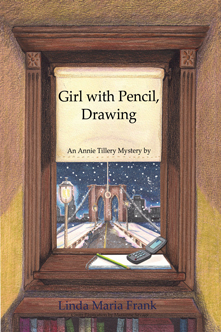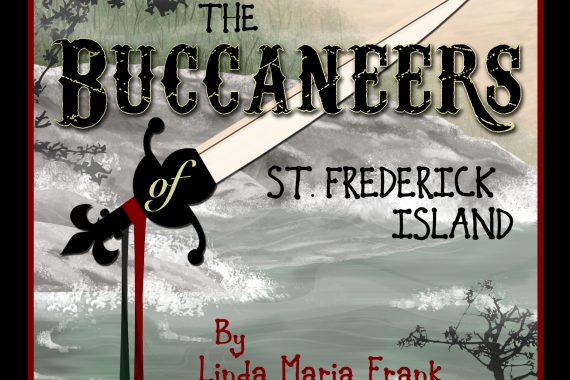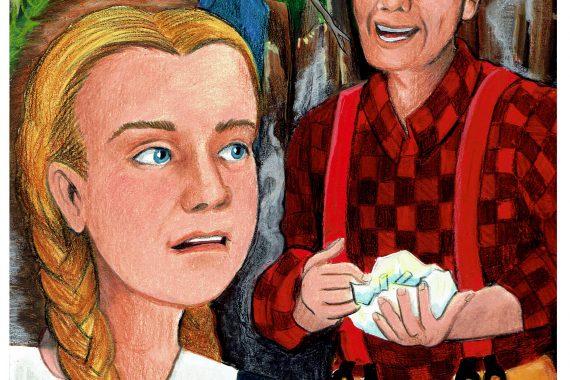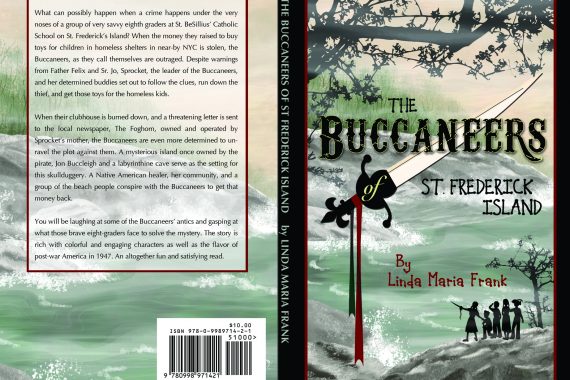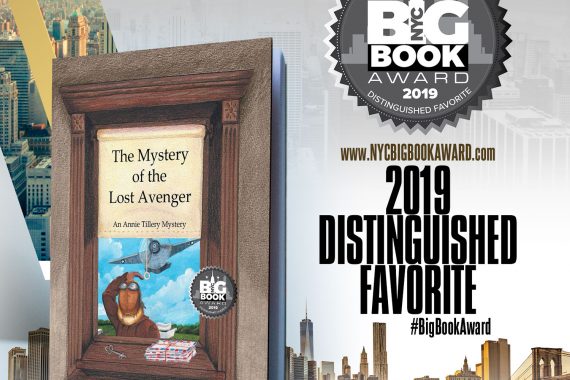The Saturday Art Class
The screech of iron wheels against iron rails trilled through my body, making my teeth ache. I tightened my knees against the large art portfolio as the New York City subway train lurched through a turn, slowing towards the Spring Street station. Not able to control my nervous energy, I left my seat and headed for the sliding doors. I balanced the precious portfolio between my knees and looked at my reflection in the door windows, checking for obvious defects in my appearance.
Boy, I thought, You are nervous, girl. Let’s see.
I ticked off the usual list of suspects causing appearance problems, starting with the new haircut and highlights. I thought it made my face look thinner, and I liked it. Check! I used makeup this morning but hadn’t hidden the sleepy eyes. Who gets up this early on a Saturday? Well check, anyway. My outfit, comprised of a black fitted jacket, black and white plaid scarf, and black earmuffs made my light hair and eyes pop. Check!
My mother’s warning rang in my ears. “Annie, stand up straight! It makes all the difference in the impression you make.” For once I didn’t argue with that voice in my head. I squared my shoulders, lifted my chin, and grabbing the portfolio and backpack, braced for the jolting stop I was anticipating with excitement and dread. Doors opened silently amid the racket of the train station. As cold damp air crept into the car, the few early Saturday morning passenger traveling with me spilled out on the platform.
My legs had a life of their own, carrying me up the ancient grimy stairway to the street above. My first art lesson at the DiCristiani Galleries loomed ahead of me. All the confidence I had felt when I won first place in my high school’s art contest evaporated like the steam swirling up from the manhole covers in the downtown streets of Soho. Here was my chance to prove the talents I hoped I had.
I was anxious to get started and most of all to meet my teacher. The gallery had sent a packet of information about their program of studies, the art studio, and my instructor, Francesca Gabrielli. Her credentials were impressive. The fact that she had been accepted in a program at the Metropolitan Museum here in New York was big.
They had sent me a brochure with photocopies of her work which I admired. I hoped to learn important techniques from her, and go beyond what I had learned in my high school studio art class.
This was going to be an exciting opportunity for me. I tightened my grip on my portfolio and remembering my “posture for success” pep talk, moved on down the street.
A fuchsia pennant hanging from a brownstone building furled and unfurled itself in the icy February wind. That brownstone with its steep flight of steps was my destination. Half a block away it posed as a haven from the cold. Even so, I wasn’t sure that I wanted to make the short walk there. I’d have to open my portfolio and show my pieces in a place not likely to be so nurturing to a seventeen year old as my art teachers at Rhodes School.
I took the steps, two at a time, and pushed the heavy oak and leaded-glass door open. What a beautiful place! I admired the wood paneling, the black-and-white marble floor, the art pieces placed around the two-story entrance hall. There was no one around and I wondered where to go. No little signs with arrows posted around the room. The only logical place to go was to follow a hallway leading to the back of the house.
“No! I can’t do that! It’s…” The strong words stopped me like a wall. The female voice came from the only open door in the hallway.
“I’m not paying you to tell me…” shouted a deep male voice. I lost the rest of the sentence as his angry voice dropped.
The sign above the door said ART CLASS. I stopped, unsure what to do. My instincts prickled, sensing the electric tone of the conflict inside the room.
“You’re hurting me!” shrilled the female voice.
With that I decided to barge in “Excuse me,” I said smiling. “Oh, I’m sorry, I didn’t mean to interrupt,” I continued, staring at the man’s hand still grasping the wrist of a young woman. She couldn’t have been more than a few years older than I. In a rough gesture, he flung her arm away, tossing back a warning as he left. “I’ll see you later.” His emphasis was on the you.
“You must be here for the art class.” Trying to hide her distress, she approached me with an outstretched hand. “I’m Francesca Gabrielli. And you are?”
“Anne Tillery.” I grasped her cold trembling hand and I tried not to stare at the ugly red mark on her wrist. What was this all about? I thought, more than a little confused.
She withdrew her hand, struggling to gain control of herself.
“I’m your instructor today. Let’s set you up and get started.”
Francesca Gabrielli was a small person, probably not over five feet as compared to my five foot eight. She was pretty with large brown eyes and a mane of curly short dark hair. She really looked like an artist, white poet’s shirt over black turtleneck and leggings. Curling down the back of her neck was one graceful curl bleached red and tied with a black ribbon. Large silver hoop earrings and black suede clogs completed the look. She was elfin in appearance. She could have been one of Santa’s helpers, and this image just added to my confusion.
This was not at all what I had expected to happen on my first day. I felt anger at the man in the office. My curiosity went into full gear as I tried to make the impression of Francesca Gabrielli at my first meeting and her outstanding credentials fit with the ugly scene in the office.
Pushing these feelings aside and trying to concentrate on the task at hand, I followed Francesca. The studio was in the back of the house in a glass conservatory that must have been the by-gone owners’ year-round indoor garden. That was the style when brownstones were built. The light was perfect. The glass classroom had an abundant supply of easels and small tables for paint and supplies.
“Pick your spot, Anne. You’re early. I have to take care of something, but I’ll be right back.”
Francesca Gabrielli was shaken and pale as she left the room. My mind wandered as I set about arranging my materials. I wondered what danger, if any, my new instructor faced.
The model walked in taking his place on the stool in the middle of the conservatory. He was an old Asian man with long white hair and a deeply lined face. Automatically I began to plan my strategy for placing his image on my sketch pad. He presented a challenge.
The boy who had set up shop next to me quipped, “Hi. Fred’s the name. Paint’s the game.”
I laughed and the Asian man offered some of his wisdom to Fred. “Yeah, and you should stick to paint, because your humor is from Oz, man.” We all laughed at this unexpected comment.
“My name’s Annie,” I said, and along with the other students, began to concentrate on my work.
Another member of the class arrived, a tall girl who might have been Indian. She chose an easel on the other side of Fred. A fourth classmate joined us, introducing himself as Edward. Edward was an impressively tall African-American and set up next to me.
Francesca returned looking much better. She drew a deep breath, pulling her sleeve over her bruised wrist. “Since this is your first lesson here at DiCristiani’s, I’d first like you to do your own thing. This way, I can judge where I need to help you.” As she circulated from sketch pad to sketch pad she seemed to grow calmer. Our model sat very still, now giving forth purely oriental mystery. We coaxed his image out of our pads and pencils, while Francesca made comments, correcting technique, making suggestions about lighting and perspective. The time flew and I felt good, confidence building.
“You’re doing real good there, Anne. You’ve got to have some talent to get a place here at Mr. D’s.”
Francesca’s comment was music to my ears. I watched her as she browsed through my portfolio. She looked young, maybe nineteen or twenty, but was probably in her mid-twenties to have this job.
“Please call me Annie. I like that better.” I ventured, “That’s not a New York accent.”
“No, I’m from Boston. I worked there for two years, so that I could come here. I’m working this job to pay for my own art lessons at the Metropolitan. There’s more work here than in Boston. Lots of restoration work.” She ran her fingers through her thick curly hair, pausing, seeming to weigh her words.
Turning back to me, eyes darkened by trouble, she asked, “Can you do me a favor when class is over, Annie?” Francesca was twisting an oily rag around her fingers, anxiety apparent in every fiber of her body.
What could I say? I thought.
“Sure, if I can,” I replied, wondering if I would regret it, struggling again with the
images of Francesca-the-instructor and Francesca-in-trouble.
“When class is over, I want to leave with you. I mean, you know, we can go out the front door together. I’ll put my coat near your things, and we’ll just go. Okay?” She waited for a response.
“Are you afraid of that guy who was trying to break your arm?” I asked, thinking it all too obvious.
“Yeah, that’s Mr. D. We had a dispute about what’s business and what isn’t and I’m getting a little bored with his way of proving a point. The last time we didn’t see eye to eye, the security guard showed up just in the nick of time. He saved me from what I suspect would have been unwanted facial reconstruction.”
She rubbed her wrist absently and continued, “If I leave with you, he wouldn’t dare to try anything. He looks into all the applications of the students who come here. You’re a cop’s kid, right?”
“My Aunt’s on the New York City police force,” I shot back. Her knowing about Aunt Jill unnerved me. Aunt Jill’s work as a New York City detective has made her a careful and suspicious mother hen where I’m concerned. “Why don’t you quit working here?”
“It’s more complicated than that. Will you do it?” Again, that pleading look.
“Okay.” I shrugged.
That’s right, I thought, He wouldn’t dare try anything with me. I guess. What could happen to us in broad daylight? When this “favor” was done, I would get Aunt J to see if she could find out more about Francesca Gabrielli, something more than the information on a brochure. I wanted to continue my lessons, but I also didn’t want to feel that my instructor was in danger, especially if I couldn’t help her. Annie to the rescue, I concluded, shaking my head.
The subject of our discussion stuck his head in the room at that moment, causing Francesca to take a pencil to my work, explaining, “This technique works best with the hair.”
She never touched my sketch. Under her breath she murmured, “It’s really good, Annie. When we have more time, I’ll show you some neat tricks of the trade.” She winked. We continued working on for about a half hour, putting finishing touches on our preliminary sketches.
The class ended, my heart soaring with her comment, and my knees shaking with the prospect of leaving this beautiful place in escape mode. We left the building fast, so fast that we were still slipping on coats as we fled down the steps. We headed for the subway station at a trot. As we passed a small alley, two men emerged and stepped out after us.
“Are they following us?” I inclined my head in their direction.
“You can count on it,” Francesca replied stiffly.
“Look, I know the subways like the back of my hand, Francesca. If we can get on that platform, I can lose them.” My art portfolio banged against my leg as we began to run. My cell phone was in my knapsack.
Oh, hell, I thought. I couldn’t get it out and run for the train at the same time. Why hadn’t I put it in my pocket!
“Let’s go!” she said, face grim, pushing me forward.
The men followed. Taking out Metrocards to speed things along, we squeezed through the turnstile, racing for the stairs and the platform for the uptown train. The station began to rumble. “That’s our train,” I yelled.
We ran, catching sight of our two pursuers coming through the turnstile as we ducked down the steps. The car doors slid open just as we got to the platform. We pushed into the train. The doors didn’t move for a heart-stopping minute as we watched feet, legs, torsos, and finally, the heads of those sinister forms appear on the stairway.


